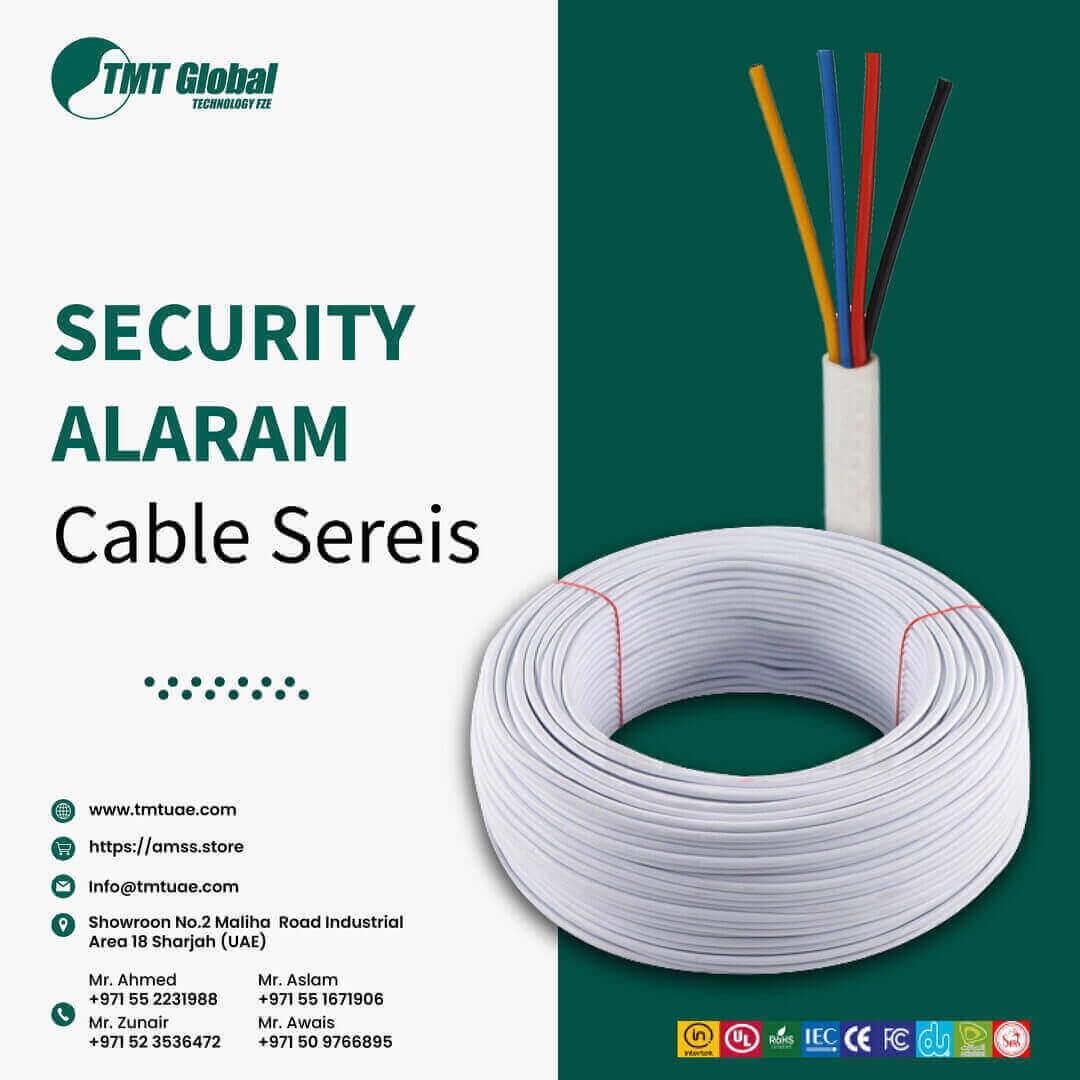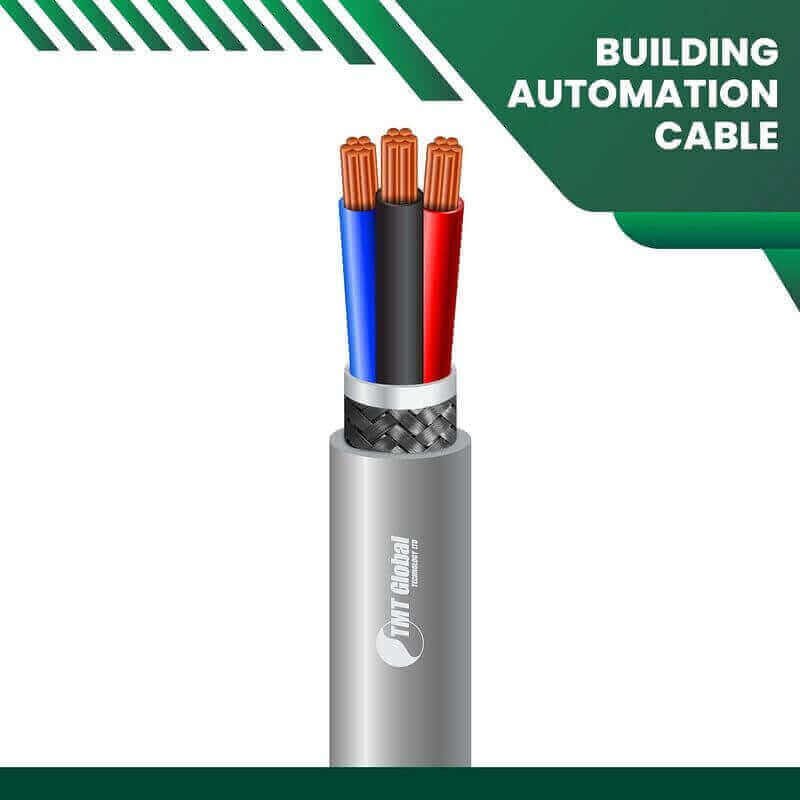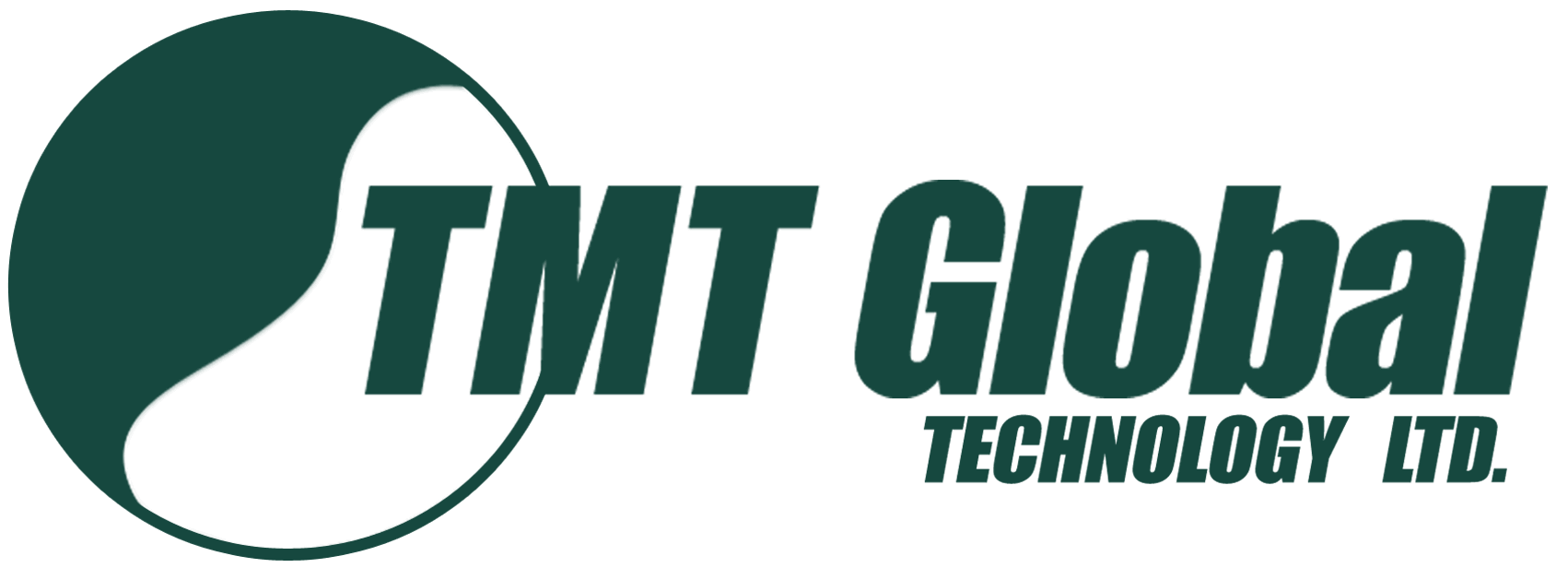Understanding Control Cables: A Deep Dive into TMT Global Technology Ltd UK

Introduction to Control Cables
Control cables are essential components within various automation and control systems, serving as electrical conductors that facilitate the transmission of signals and power. These specialized cables are designed to connect different devices, enabling the control of machinery and processes across multiple industries, including manufacturing, telecommunications, and transportation. The significance of control cables cannot be overstated, as they play a pivotal role in ensuring the efficient functioning of electrical and electronic systems.Control Cables
Unlike standard power cables, control cables are constructed to transmit low voltage signals and are typically used in conjunction with electrical equipment that requires precise control and monitoring. They consist of one or more insulated conductors that may be shielded to protect against electromagnetic interference, ensuring that the signals remain clear and uninterrupted even in complex environments. The shielding is particularly important in industrial settings where numerous electrical devices operate simultaneously, as it enhances the reliability of the communication system.



The applications of control cables are vast, encompassing various fields where automation is paramount. In industrial automation, they are integral to connecting sensors, actuators, and programmable logic controllers (PLCs). In the telecommunications sector, control cables manage signal transmission between equipment, heating cable control systems in uae ensuring optimal performance. Furthermore, within the automotive industry, control cables contribute to the functionality of critical systems such as anti-lock brakes and electronic stability control.
It is crucial to differentiate control cables from other types of cables, such as power cables and data cables. While power cables are primarily designed to carry high voltage electricity, and data cables are tailored for information transmission at high speeds, control cables specifically target the control and regulation aspects of systems. This specialization makes them indispensable in modern automated environments, emphasizing their role in driving efficiency and safety across various applications.
Overview of TMT Global Technology Ltd
TMT Global Technology Ltd, a prominent player in the manufacturing industry, was established with a clear mission to revolutionize the production of control cables. With a strong footprint in the UK and an expanding presence internationally, TMT Global Technology has cemented its reputation as a leader in innovation and quality. The company was founded on the principles of excellence, prioritizing durability and performance in its products designed for a myriad of applications.
Since its inception, TMT Global Technology Ltd has focused on driving advancements in control cable technology, ensuring that its offerings meet the highest industry standards. The company’s vision is not solely limited to commercial success; it encompasses a broader commitment to sustainability and environmental responsibility. By emphasizing eco-friendly practices, TMT Global Technology aims to contribute positively to the global manufacturing sector.
Located in the heart of the UK, TMT Global Technology Ltd has leveraged its geographical advantages to cultivate strong relationships with key industries, including automotive, telecommunications, and construction. This strategic positioning has facilitated the company’s growth in the global market, allowing it to cater to diverse clientele across various sectors with distinct needs. TMT Global is recognized for its innovative approach, which encompasses not only the development of new products but also the enhancement of existing ones, ensuring they remain competitive and efficient.
Quality assurance is paramount at TMT Global Technology Ltd. The company’s rigorous testing protocols and adherence to international standards underscore its commitment to delivering reliable control cables that clients can trust. This dedication to excellence, combined with its innovative spirit, positions TMT Global Technology as a forward-thinking manufacturer that is well-equipped to address the evolving demands of the marketplace.
Types of Control Cables Manufactured by TMT
TMT Global Technology Ltd offers a diverse selection of control cables, designed to cater to the varying needs of both industrial and commercial applications. These cables are meticulously crafted to ensure superior performance, reliability, and safety in different environments. The primary types of control cables include multi-core, single-core, and armored cables, each serving specific purposes.
Multi-core control cables are typically employed in complex applications requiring the transmission of multiple signals. They are commonly used in automation, instrumentation, and process control. These cables are designed to provide exceptional flexibility while maintaining strong signal integrity. Their construction often incorporates twisted pairs or shielded conductors to minimize electromagnetic interference, which is critical in ensuring precise communication in modern industrial settings.
Single-core control cables, on the other hand, are predominantly used in simpler systems where only one signal is needed. Their robust design makes them suitable for applications that require direct power transmission, such as motor control systems. TMT offers a range of single-core cables with various conductor sizes to cater to different power requirements, ensuring that users can find a suitable cable for their specific applications.
Armored control cables offer enhanced protection for applications exposed to harsh conditions or mechanical damage. These cables are crucial in environments such as mining, construction, and offshore industries, where physical wear and environmental factors can degrade cable integrity. The armored design not only safeguards the internal conductors but also provides resistance to moisture and chemicals, ensuring long-lasting performance.
In addition to these main categories, TMT Global Technology Ltd also offers customized control cable solutions, allowing clients to meet unique specifications and requirements. By providing a versatile range of control cables, TMT positions itself as a competitive player in the market, catering to the diverse needs of various industries.
Materials and Technology Used in Manufacturing
The manufacturing of control cables at TMT Global Technology Ltd utilizes a range of materials and advanced technologies to ensure optimal performance and durability. The selection of raw materials is a critical component in producing high-quality control cables. Typically, copper is preferred for its excellent electrical conductivity, while aluminum may be used in certain applications for its lighter weight and cost-effectiveness. The choice of conductor material directly affects the cable’s efficiency and lifespan, which is why TMT focuses on sourcing the highest-grade materials available.
Insulation is another key factor in cable performance. TMT Global Technology Ltd employs various insulation types, including polyvinyl chloride (PVC), cross-linked polyethylene (XLPE), and thermoplastic elastomer (TPE). Each material offers unique properties designed to withstand environmental stressors, such as temperature fluctuations, moisture, and chemicals. For example, XLPE is known for its superior thermal resistance and is often used in applications requiring high-temperature stability.
Shielding options play a significant role in minimizing electromagnetic interference (EMI), a common issue that can affect the operation of control cables. TMT utilizes multiple shielding techniques, such as foil and braided shielding, to ensure signal integrity and reduce crosstalk between wires. These methods are critical in protecting the cable from external interferences, thus enhancing its reliability over time.
Technology in manufacturing is continually progressing, and TMT Global Technology Ltd embraces these advancements to improve cable quality. Automated production lines and sophisticated testing equipment are employed to monitor every aspect of the cable manufacturing process, ensuring that each product meets stringent industry standards. This integration of cutting-edge technology not only boosts productivity but also ensures that every control cable produced is both high-performing and durable.
Quality Assurance and Compliance
TMT Global Technology Ltd UK places a strong emphasis on quality assurance throughout the production process of control cables. This commitment is reflected in their adherence to both national and international standards, ensuring that every product meets stringent requirements for performance and durability. By following industry-recognized standards, TMT ensures that its control cables are suitable for various applications, from industrial machinery to aerospace systems.
To maintain high-quality benchmarks, TMT’s control cables undergo rigorous testing and quality control procedures. These include assessments of material strength, conductivity, and insulation integrity. Testing protocols often comply with guidelines set forth by organizations such as the International Electrotechnical Commission (IEC) and the British Standards Institution (BSI). Such compliance is crucial, as it not only demonstrates product reliability but also assures customers of their safety in application.
Additionally, TMT Global maintains certifications that further underline its dedication to quality assurance. These certifications, including ISO 9001, signify that their quality management systems are effective and continuously improving. By achieving such certifications, TMT not only enhances its credibility in the market but also solidifies customer trust in its offerings.
The company’s proactive approach to quality assurance ensures that all control cables are subjected to real-world testing scenarios prior to release. This could involve simulating extreme environmental conditions and operational stresses that cables might face over their lifespan. Such thorough testing guarantees that TMT’s products will perform adequately under demanding circumstances, reducing the risk of failure and enhancing overall safety in various use cases.
In summary, TMT Global Technology Ltd UK’s rigorous quality assurance and compliance measures are fundamental to the manufacture of reliable control cables, ensuring that they consistently meet the highest industry standards.
Applications of Control Cables in Different Industries
Control cables are vital components that facilitate the smooth operation of various systems across multiple industries. TMT Global Technology Ltd, a notable manufacturer, provides an array of control cables used in crucial applications within sectors such as manufacturing, construction, telecommunications, and transportation. These cables play a pivotal role in ensuring operational efficiency and enhancing system functionality.
In the manufacturing sector, control cables are extensively utilized to connect control panels to machinery. These cables enable precise control over machinery operations, contributing to automating processes that reduce manual labor and improve production rates. The reliability of control cables is essential in maintaining safety and ensuring the continuous operation of manufacturing lines, making them an indispensable part of modern factories.
The construction industry also relies heavily on the usage of control cables for various purposes. They are integral to hoisting equipment, allowing for the operation of lifts and cranes that transport materials to high elevations. Additionally, control cables are instrumental in safety mechanisms that mitigate risks associated with heavy machinery. As construction sites strive for improved safety standards, the demand for reliable control cables becomes increasingly important.
In telecommunications, control cables facilitate data transmission and help maintain connectivity in networks. They are used to connect various communication devices, ensuring that signals are transmitted without obstruction. With the rapid advancement of technology, the demand for high-performance control cables that support increased data rates has surged, underlining their significance in modern communication systems.
Transportation systems equally depend on control cables for operational efficiency. In railway networks, control cables help manage signaling and communication among stations, contributing to the safety and coordination of train movements. Similarly, in aviation, control cables are employed in aircraft systems for controlling various functions, ensuring safe and reliable operation.
Overall, control cables produced by TMT Global Technology Ltd play crucial roles across different industries, showcasing their versatility and importance in enhancing operational efficiency.
Innovations and Future Directions
TMT Global Technology Ltd UK has consistently exemplified innovation in the control cable manufacturing sector. The adoption of advanced engineering techniques has significantly improved the durability and performance of their control cables. These innovations include the integration of high-performance materials that enhance resistance to environmental stresses such as heat, moisture, and chemicals. Such developments ensure that their control cables can effectively communicate signals in demanding applications, from industrial machinery to aerospace systems.
Moreover, TMT is committed to embedding eco-friendly practices within their manufacturing processes. The push towards sustainability has led the company to explore the development of cables that utilize recyclable or biodegradable materials, which minimize environmental impact while still meeting industry standards. By prioritizing eco-conscious designs, TMT aims to align with global initiatives for reducing waste and promoting sustainable manufacturing practices in the cable industry.
Future trends in the control cable market suggest that digitalization and automation will play crucial roles in the ongoing development of these critical components. With the rise of smart technologies, TMT is exploring the potential of integrating IoT capabilities into their control cables. This development would allow for enhanced data transmission and diagnostics, paving the way for smarter, more efficient systems across various industries. Additionally, advances in wireless technology may lead to innovative solutions that reduce the reliance on traditional wired control cables, thereby transforming the landscape of cable manufacturing.
In light of these innovations and expected trends, TMT Global Technology Ltd UK is well-prepared to not only meet the current demands of the market but also to drive the future of control cable technology. Through ongoing research and adaptation, they endeavor to position themselves as leaders in the evolving cable industry.
Customer Support and Services
TMT Global Technology Ltd places significant emphasis on customer support and services, recognizing that such elements are crucial when it comes to client satisfaction and operational efficiency. The company adopts a consultative approach, collaborating closely with clients to identify their specific needs and recommend the most suitable control cable solutions tailored to their unique applications. This proactive engagement allows TMT to provide not just products, but comprehensive solutions that enhance operational performance.
In addition to the consultative services offered prior to purchase, TMT Global Technology Ltd’s commitment to after-sales support is exemplary. The company believes that customer service does not conclude with the sale of a product; instead, it is an ongoing process. Their dedicated support team is always on hand to assist customers with any issues that may arise post-purchase, ensuring that their control cables function optimally throughout their lifecycle. This support includes troubleshooting, maintenance advice, and technical guidance, reflecting TMT’s deep industry knowledge and commitment to service excellence.
TMT Global Technology Ltd also invests in customer feedback mechanisms, enabling them to continually assess customer satisfaction and gather insights that inform their service offerings. By actively seeking input from their clientele, TMT demonstrates its willingness to adapt and evolve in response to changing customer needs. Ensuring customer satisfaction is not merely a goal; it is part of the company’s core mission. This commitment manifests in the quality of their service, ultimately fostering long-term relationships built on trust and reliability. Overall, TMT Global Technology Ltd’s comprehensive approach to customer support and services not only enhances their reputation in the control cable industry but also guarantees that their clients receive unparalleled value and support throughout their partnership.
Conclusion
In summation, TMT Global Technology Ltd has positioned itself as an esteemed leader in the control cable manufacturing sector. This blog post has highlighted the various aspects of control cables, from their design and functionality to their critical applications across multiple industries. It is evident that the significance of high-quality control cables cannot be understated, as they play a pivotal role in ensuring safety, efficiency, and performance in systems ranging from industrial machinery to telecommunications. TMT Global Technology Ltd distinguishes itself through its commitment to innovation and adherence to the highest standards of quality in manufacturing.
The company not only meets but often exceeds customer expectations by providing tailored solutions that accommodate the unique requirements of diverse applications. As industries evolve, the demand for more advanced and reliable control cables continues to rise, and TMT Global Technology Ltd remains at the forefront of this evolution. Their extensive research and development efforts enable them to introduce cutting-edge products that incorporate the latest technology, thereby setting new benchmarks within the industry.
Furthermore, TMT Global Technology Ltd’s dedication to sustainability and responsible manufacturing practices reflects a forward-thinking approach, aligning with global trends towards greener technologies. This alignment not only enhances the company’s reputation but also contributes to a more sustainable future for the industry. In conclusion, the strides made by TMT Global Technology Ltd in the realm of control cables underscore their essential role in advancing technology standards and adapting to the ever-changing demands of their customers. The impact of their innovations will undoubtedly resonate across various sectors for years to come.
